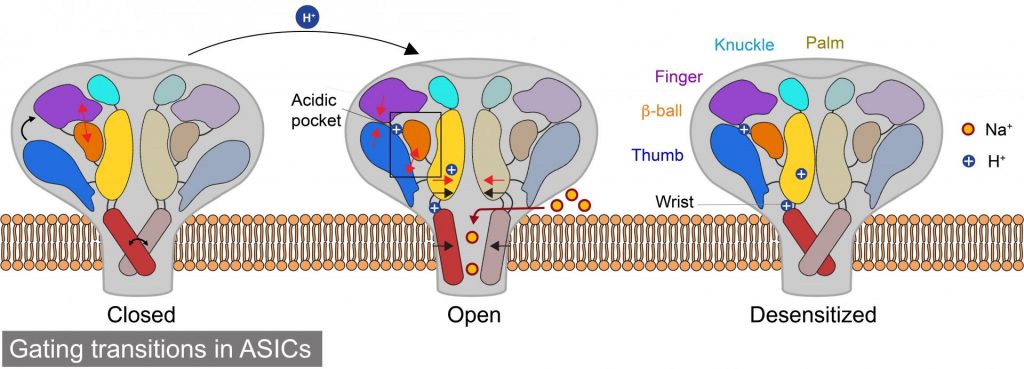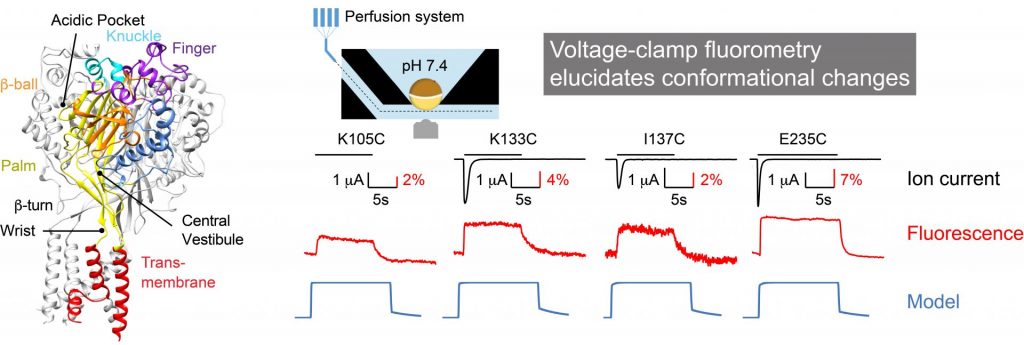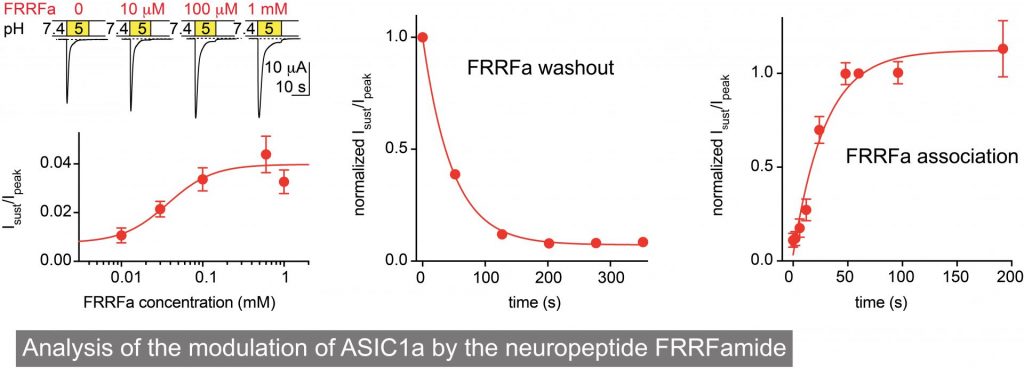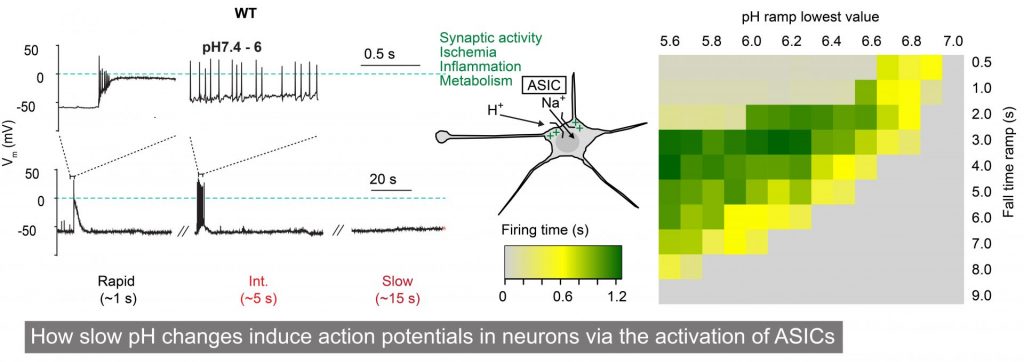Function and regulation of acid-sensing ion channels (ASICs)

Changes in pH strongly affect the function of most proteins. We study the pH sensors “acid-sensing ion channels” (ASICs). ASICs are expressed in the nervous system. They open when the extracellular pH drops. In such situations they modulate neuronal signaling. There is evidence for roles of ASICs of the central nervous system in memory functions, fear conditioning, pain sensation and cell death during ischemic conditions. ASICs in the peripheral nervous system are involved in pain sensation. The research of our laboratory has three main lines.

1) We analyze in molecular detail the mechanisms by which pH controls opening and closing of the ASIC pore, because we think that knowing the mechanism will allow the development of targeted ASIC inhibitors. To understand on the molecular level how protonation of some key residues of the ASIC extracellular domain leads to opening and desensitization of the channel pore, we try to identify protonation sites and to determine the changes in conformation occurring during channel activity. To this end we combine electrophysiological analysis with site-directed mutagenesis, molecular dynamics simulations, pKa calculations and voltage-clamp fluorometry. In the course of this project we have identified protonation sites, analyzed in detail the function of several domains of ASICs, and described the timing of conformational changes in the channel. For an illustration of these approaches, see a recent article of our laboratory on fast conformational changes in the pore entry.

2) We study the regulation of ASICs. The function of these channels is modulated by many mediators and compounds. Knowledge of these regulations is essential for an understanding of the physiological functions of ASICs. In recent studies we have identified sites in ASIC1a that are involved in the modulation by neuropeptides, and we have shown by which signaling pathway H2S regulates ASICs.

3) We investigate how ASICs and other acid-sensitive channels affect the signaling activity of neurons as a function of pH. To understand the cellular roles of ASICs we measure action potential generation induced by acidification in neurons. The figure illustrates schematically the mechanism of action potential induction by ASICs and shows examples of our analyses. We have shown how the ASIC-mediated action potential generation depends on the speed of the pH change.
Electric signaling in plants
Besides this main research orientation, the laboratory investigates also electrical communication in plants. In collaboration with E. Farmer (UNIL) we study wound-induced long distance signaling in Arabidopsis thaliana.